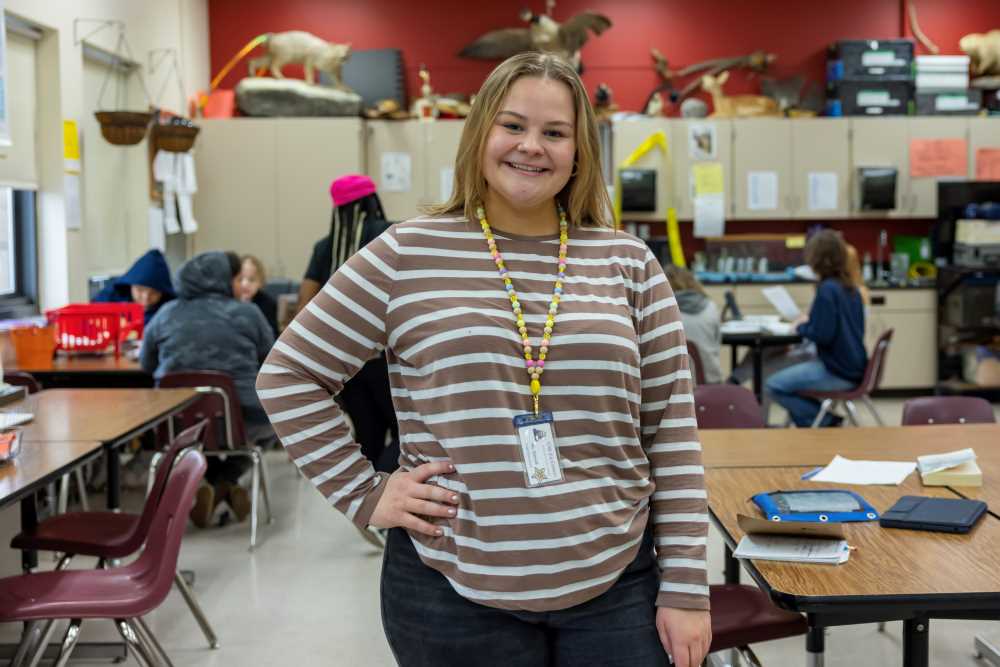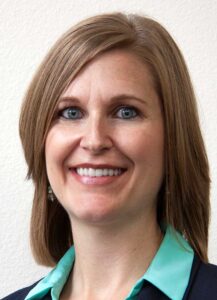
Emma Kleindl, a middle childhood-early adolescence major, used the lessons she learned at UWL to better engage with students while student teaching at Lincoln Middle School in La Crosse.
From preventing floods to making a hole in one, UW-La Crosse teacher candidates are finding innovative ways to teach elementary students about science and engineering.
Heidi Masters, associate professor of educational studies, worked with three groups of preservice teachers to design and implement science and engineering units within two fourth-grade classrooms and one fifth-grade classroom at Southern Bluffs Elementary School in La Crosse.
Masters says the units were mutually beneficial, allowing preservice teachers to gain valuable experience in STEM education, and providing elementary students with engaging and enriching activities.
“When designing the units, I emphasized the importance of identifying a real-life, relevant and developmentally appropriate problem/challenge students could find a solution for by the end of the unit,” Masters explains. “We used a backward design approach and thought about the problem/challenge the students would need to find a solution for and then considered what science lessons students would need to engage in before engaging as engineers.”
In one unit, students discovered how floodwater interacts with different materials and land formations, and then used this knowledge to research, design, construct and test a solution to prevent flooding.
In another unit, they learned about natural and human-driven factors affecting ecosystems, and devised a sustainable, cost-effective plan to keep rabbits away from farmers’ fields.
In the third unit, they explored force and motion concepts in an interactive environment, and then applied these principles to design, build and test a miniature golf course for a local amusement park.
“One of the biggest takeaways from the science and engineering project was the 5E lesson plan structure we used,” says Jacob Brehmer, a middle childhood-early adolescence major who is student teaching this spring at Herman Elementary School in Sparta. “It is a lesson plan framework that allows the teacher and students to really take a deep dive into a topic while providing opportunities for different activities.”
Emma Kleindl, a middle childhood-early adolescence major student teaching at Lincoln Middle School in La Crosse, says the project helped her recognize the potential in every student.
“Working with fourth-graders on this unit helped me discover how imaginative all students can be,” she says. “I want my seventh-graders to explore life and use their creativity to learn. No one ever really remembers much from middle school, but they do remember the projects and times where they got to exercise their imagination.”
In the past, Masters says, teacher candidates pursuing an elementary-middle school teaching license with a minor in science had limited opportunities to teach science throughout their teacher education program. Chances to explore and teach engineering were even scarcer.
After implementing the units, Masters worked with the preservice teachers to write and publish summaries of their units in Science and Children, a national journal for K-5 educators.
This was beneficial for two reasons, Masters says.
“It offered the preservice teachers a chance for reflection, and it will bring their ideas in front of a much wider audience, potentially inspiring other teachers to implement similar ideas in their classrooms,” she says.
Written by UW-La Crosse
Link to original story: https://www.uwlax.edu/news/posts/engineering-new-ways-to-teach/

